by Tara
Staying warm during a long-term disaster will be as essential to your survival as having access to water and food. Failure to stay warm can lead not only to the obvious frostbite and hypothermia, but also cause a person to become sick at the exact time it is most dangerous to contract even a mundare illness.
When prepping for cold weather a successful approach will be three-pronged:
• Home
• Bugging Out
• Work and Vehicle
Having an off the grid heat source to not only keep your home warm but to also use for water purification and food preparation reasons should at the top of your priority list and survival budget plan.
Top 6 Ways To Stay Warm In Your Home During An Emergency
1. Wood Cook Stove
This multi-use type of wood stove will not only keep you warm but can be used as both a stove and an oven. These old-fashioned style cook stoves provide efficient heat that can be manually regulated and even used to water bath or pressure bath can upon during a long-term disaster.
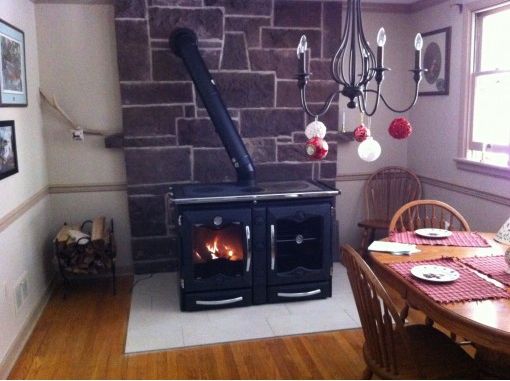
A wood cook stove is the most economical choice for home emergency heat. Not only will a unit like the one shown in the photo above heat an entire floor of a typical home, it will also you to cook, bake, purify water, and in may cases, come complete with a warming unit.
When popping food in a microwave is no longer an option, keeping a plate of food warm for a member of the prepping family who is out on perimeter patrol or working the land, will be not only incredibly useful, but an incredible morale booster. Photo courtesy of WoodCookStove.com.
2. Wood Stove
These stoves are staples in rural homes across the country. They provide far more heat than a fireplace. Although not as easily as with a wood cook stove, if you purchase a unit made of cast iron with a flat top, the surface can also be used or heating food and boiling water. Pellet wood stoves might seem like a handy way to heat your home off grid because chopping firewood is not necessary, but you will not be able to run to the store or order wood pellets online during a SHTF disaster.
Unless your state laws or home insurance policy prohibit it, always opt for a traditional wood log burning stove. By attaching a copper coil set up to the wood stove (and likely to a wood cook stove, as well) you could generate your own hot water even after a complete power grid failure.
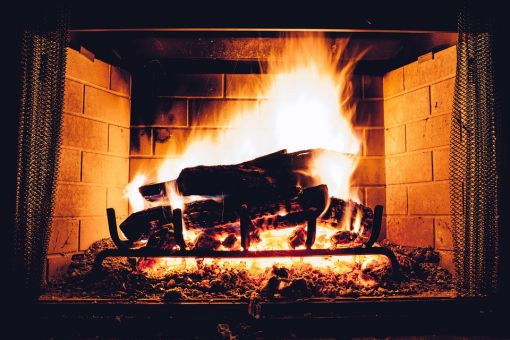
3. Fireplace
There is nothing quite like the bucolic and tranquil image crackling logs in a fireplace musters up, you will need multiple fireplaces on a single floor to achieve the same type of heat output you would garner from either a wood cook stove or a wood burning stove. If you build or purchase a cast iron or wrought iron tripod and cast iron cookware, you could make one-pot dishes and boil water in a fireplace.
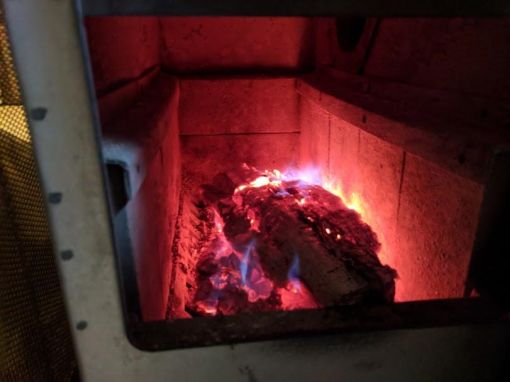
If relying on a wood burning stove to keep you warm during an emergency disaster, make sure to purchase an extra grate and door insulation cordage. The ash pan beneath the wood burner should be emptied daily during heavy use to avoid a fire and unnecessary wear on the grate.

4. Propane Heaters
A propane heater can warm a room quickly, but will not broadcast out the warmth like either style of wood burning stoves or even a fireplace. Proper ventilation must be a top priority when running a propane heater to avoid carbon monoxide poisoning… and death. If you plan on using one or multiple propane heaters indoors during an emergency disaster, invest in nominally priced carbon monoxide (combo units that also detect fire are recommended) and copious amounts of batteries. You will have to stockpile propane to keep the unit pumping out the heat.
Any emergency heat unit that is fuel by a non-renewable source can leave you vulnerable to exposure and illness when the stockpile is ultimately depleted. We have a large propane heater that is filled up twice annually for about $350 to $500 per fill. If you purchase a similar tank and budget for the yearly fill ups, you should be able to expect to have a reliable heat source for six months at a stretch – at least. We have never run our tank completely out before getting the winter time fill up.
Get the most out of your propane heater by using a catalytic heater version with a ceramic element. This type element allows the propane to burn more along the lines of hot coals in a fire instead of a flowing flame, and not only saves on fuel but could pose less of a safety hazard.
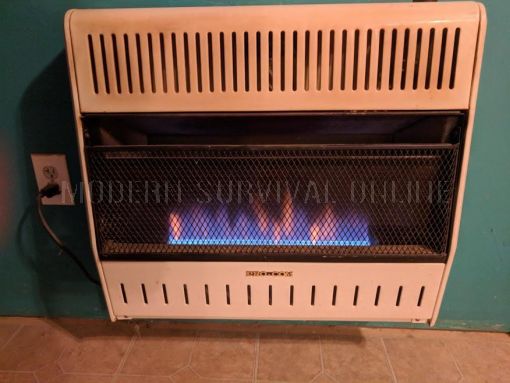
5. Outdoor Wood Furnace
This type of emergency heat unit will likely tax your survival budget, but will effectively move all of your heating needs off grid. These large exterior furnaces use pre-split logs and must be “fed” at regular intervals to avoid a drastic drop in temperature. Unless your prepper retreat offers ample firewood and you have both the helping hands and manual tools to drop a plethora of trees, you would
likely run out of available fuel before a long-term disaster even ends.
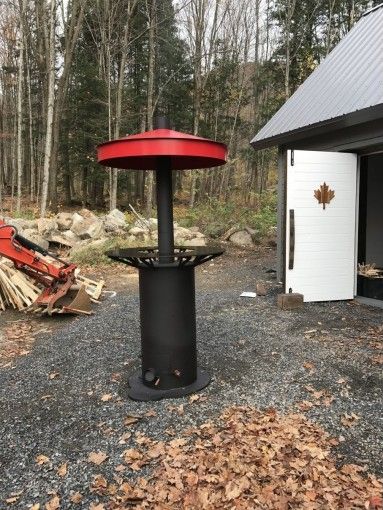
An outdoor wood heater like the one pictured above cannot be used to heat your home during an emergency, but it can be placed just outside of a garage, workshop, or other outdoor area where work is being conducted, to help keep the prepper group member from becoming too cold while completing a necessary task – or help prevent livestock from freezing to death during a snow or ice storm.

6. Solar Generator
Any type of generator will allow you to power an electrical heater, but a solar generator will work as long as the sun shines (even during the winter months) without needing to be fed any type of stockpiled fuel.

7. Kerosene Heater
These inexpensive and portable heaters can be used indoors with proper ventilation as well as in garage and outbuildings, as long as all manufacturer’s safety protocols are followed. Like with propane, you will only stay warm as long as your fuel supply holds out – making both styles of off grid heat a great companion heat source but should never be relied upon as your sole source of emergency warmth.
Warming Tips
• Use blankets to seal off any part of the house that absolutely does not need to be heated. Sleeping the entire family in the room with the wood stove or other source of alternative heat source, will allow you to not only monitor the fire all night but waste less of your fuel by closing the dampers somewhat and still remaining warm.
• Do not go in and out of the house any more than necessary, to avoid the room temperature from dropping unnecessarily.
• Do outdoor chores during the heat of the day to avoid becoming chilled and exposing the house to cold air repeatedly.
• Eat or drink something warm before sleeping and layer your clothing and blankets to help stay warm and conserve fuel.
• Place towels or blankets anywhere that a draft is flowing to avoid heat loss, and chilly air.
• All wood is not created equal, and anything that you cut will need time to cure. Hardwoods like oak, hickory, walnut, and locust, will burn hotter and can last all night. Softwoods like poplar and birch, are great to use with kindling to get a fire going.
The most important thing to remember when making plans to heat your home during any type of disaster, it the cost vs. payoff of the off grid heating source, and the availability of fuel.
Buying multiple propane and kerosene heaters to keep you warm during a SHTF event will be far less expensive than shelling out $1,000 to $3,000 for either a wood cook stove or a wood burning stove
Either of these types of heat sources are capable of heating a large space in a relatively short amount of time, cost you nothing for fuel if your prepper retreat is partially wooded, not be dependent upon any type of mechanical components that can easily break or rely upon fuel delivery for use.
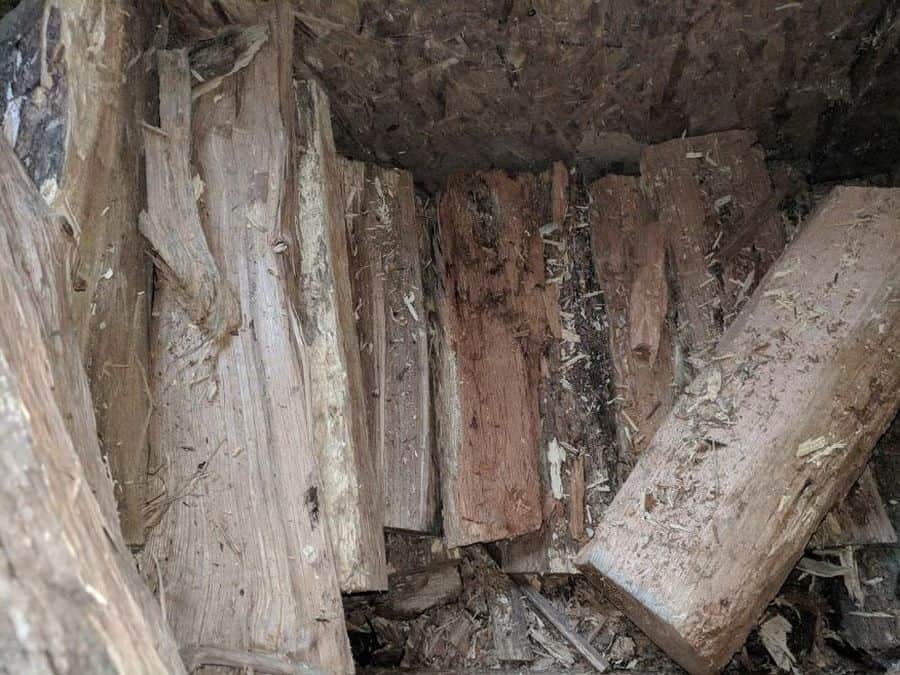
Work And Vehicle Emergency Heat Sources
To stay warm in an enclosed space away from home, your emergency heat sources must be lightweight, portable, safe to use from a ventilation perspective, and hopefully durable.
Ceramic Pot Heater
Use to ceramic flower pots to make a simple emergency heater that is both cheap and portable – but not durable. Place on flower pot on top of another after placing an oil lamp or candle inside. The heat generated inside of the clay pot will radiate around at least the immediate area if not a small room, office or vehicle.
Hand and Foot Warmers
These extremely cheap little packets can be placed not only inside your gloves and shoes, but also in your coat pockets, pants, pockets, inside of your belt, just about anywhere on your body that can become chilled or heat can escape from when exposed to the cold.
Layering
Keep cold weather clothing in your office, school or work locker, and inside your vehicle – even during the summer months. If you are forced to walk home or shelter in place inside of an unheated building at night, you will get chilled, especially if exposed to rain and wind.
Keep wool or thick socks, weatherproof lined gloves, a hat with ear flaps, a ski mask, long underwear, and a weatherproof coat and boots in your go bag no year round. Purchase winter layering gear with 100 grams per square meter insulation counts to decrease the loss of body heat. This type of gram count is typically present in down and wool winter wear.
Mylar Emergency Blankets
These one-time use blankets can be wrapped around your body to stay warm, and slept inside of when use like a sleeping bag. Never pitch the mylar blankets after one use though, because they are so lightweight, they can be packed with you and used as an emergency shelter or to help protect gear from the elements.
Ways To Stay Warm When Bugging Out
The first priority when trying to stay warm during a bugout is to prevent the loss of body heat. Staying dry is the single most important step in the process.
• Packing rain repellant outerwear in your bugout bag will not only prevent you from getting soaked and chilled, but can stave off the frostbite that can lead to the hypothermia that kills in hours, not days.
• Extra pairs of socks and a poncho can be stored in your bugout bag without adding any real weight to your survival kit, or taking up much room.
• The single use hand and foot warmers as note in the section above, will also help keep you warm when bugging out.
• Invest in a quality 4-season sleeping bag to avoid getting chilled to the bone at night.
• Instead of pushing on with your bugout prep until dusk or trying to walk throughout the night, make camp early. The temperature can begin to drop quickly at 5 pm. Because you are walking briskly or hiking while carrying your bugout bag, you might not fully grasp the change in temperature.
If you get inside your emergency shelter and inside a good sleeping bag before your body is subjected to even colder air, you will stand a better chance of maintaining decent body heat and preventing a chill that might not be able to shake all night long.
Ideally, you want any sweat you have generate to dry completely before it gets cold, and the perspiration causes your clothing and hair to become damp.
• If you are bugging out during the winter and a storm blows in, make a snow cave to stay warm. Use a shovel or your gloved hands to form a cave shape just wide enough for sleeping that is about four feet tall. Stomp on the snow with your boot to pack it down if you do not have a shovel.
Create a sturdy door opening to crawl out of and for proper ventilation to avoid suffocation. I recommend using some sturdy broken branches to create a snow door frame around for added support against a cave in. No matter how thirsty you get, do not eat snow, it will chill your body too much, always take the time to melt it first.
• When nature calls, use a bottle with a lid to relieve yourself to avoid crawling out of your sleeping bag, shelter, or snow cave to avoid exposure to the elements during the night.
• A white gas stove like a Coleman Sportster II Dual Fuel 1-Burner Stove, is small and lightweight enough to tote in a bugout bag and should provide ample heat inside of a small emergency shelter.
• A folding camp stove is another idea bugout bag heat source that will help keep you warm during an emergency. These camp stoves are durable, inexpensive, lightweight, and feature corrosion resistant and wind shielding construction. Little green Sterno cans provide the fuel for the folding stoves – they too are inexpensive, durable and lightweight enough to fit easily into a bugout bag.
• Alcohol stoves, also often referred to as solo alcohol burners are compact, durable, and not only cheap, easy to make on your own, as detailed in the video below.
It would be impossible to tote every single thing you might need in a bugout bag and still be able to lift it. When making a list of survival priorities to place in the emergency bag, place outerwear that will protect you from the elements and at least one type of portable heat source that could be used anywhere to keep yourself warm.
Conclusion
A wildfire could destroy part of all of your wood cook stove, wood stove, fireplace, or outdoor wood furnace supply in mere hours, keep that in mind when budgeting for home heat sources.
No matter what type of heat source you choose to use in your home and as a portable emergency warming tool when away from home, always have at a minimum, one backup option of some type.

via Modern Survival Online https://ift.tt/2OSXnxz
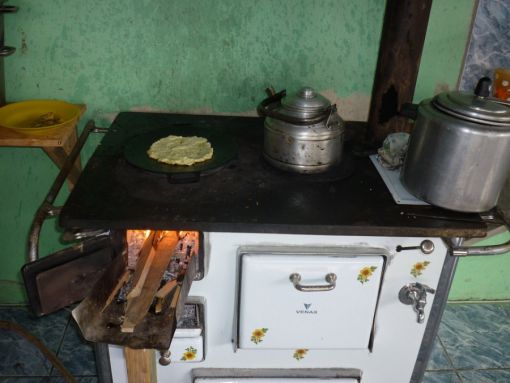
No comments:
Post a Comment